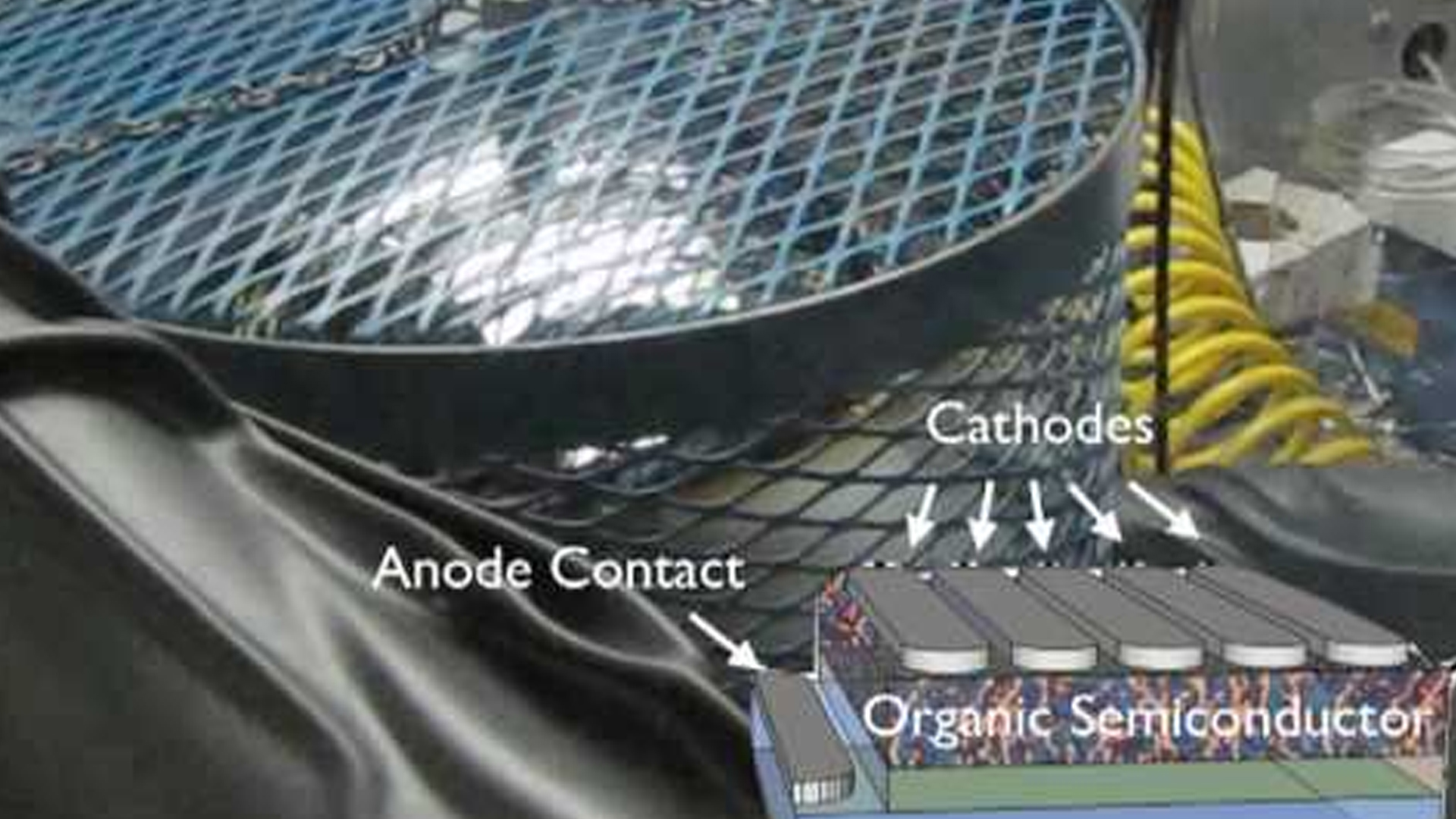News Article
Solar Arrays Provide Power In Space
For nearly 50 years, Astrium's centre of competence for solar arrays in Ottobrunn has been equipping spacecraft of every class with these highly efficient "˜power plants'. Now, Astrium has installed the one millionth solar cell from its supplier AZUR Space, a medium-sized supplier of solar cells based in Heilbronn, Germany, and delivered its 300th solar array in the presence of the Bavarian State Minister of Economic Affairs, Infrastructure, Transport and Technology, Dr. Martin Zeil. Astrium has also signed a long-term cooperation agreement with AZUR Space. The 100-strong Astrium team is currently busy preparing the solar arrays for the European BepiColombo Mercury probe. Astrium is also developing the world's most modern solar array for the new European ALPHABUS telecommunications satellite.
"Weather observation, environmental monitoring, disaster management, navigation, telecommunications from space and numerous scientific missions "“ all these applications would be impossible without Astrium's particularly reliable solar arrays," said Evert Dudok, CEO of Astrium Satellites. "Today's modern gallium arsenide solar cells that we install in space have now reached an efficiency of up to 28 percent, making them more than twice as efficient as the solar cells currently used for roof installations. Space then can contribute to improving conditions on Earth, and, as the number one European company for space technologies, were are acting as an innovation driver for terrestrial applications."
All satellites require electrical power to operate in space "“ and they get that power from the Sun. The environmental conditions in space are very harsh, with extreme temperatures ranging from -180ºC to +130ºC coupled with solar radiation, so the solar cells required for these applications need to be extremely robust. The solar arrays developed and manufactured by Astrium have an output ranging from a few hundred watts up to 26 kilowatts. Featuring some 20,000 solar cells and a wingspan of up to 19 meters (for each panel either side of the spacecraft), a solar array weighs no more than 145 kilograms and is folded during launch to a thickness of 30 centimetres. Once the satellite is in space, two of these solar wings are deployed to the left and right of the satellite to meet its electrical power needs. To date, not a single Astrium solar array has failed while in operation.
The Astrium solar panel production facility in Ottobrunn features three parallel integration lines, enabling up to nine large arrays to be in production simultaneously. A 4,200 square meter cleanroom provides plenty of space for production, integration and testing benefiting from the fact that all the development and manufacturing processes are carried out in one single place.
To be able to withstand the challenging conditions they will experience in space, the solar panels are coated with a protective layer made out of glass, bonded to a carbon-fibre substrate and then wired. The electrical configuration must be designed to ensure that the satellite receives the necessary power at all times. Astrium guarantees that the arrays will still be capable of delivering the final service agreed with the customer after 15 years in service "“ without the option of any repairs being carried out.
Astrium has also developed a patented method of detecting potential breakages and other defects in its solar cells, further increasing this way the quality of its arrays. Though normally programmed to receive light and emit power, solar cells can also be operated in reverse "“ in other words consuming power and emitting light in a process known as electroluminescence. A special camera can then be used to examine the illuminated solar cells to detect breakages and other defects.





























